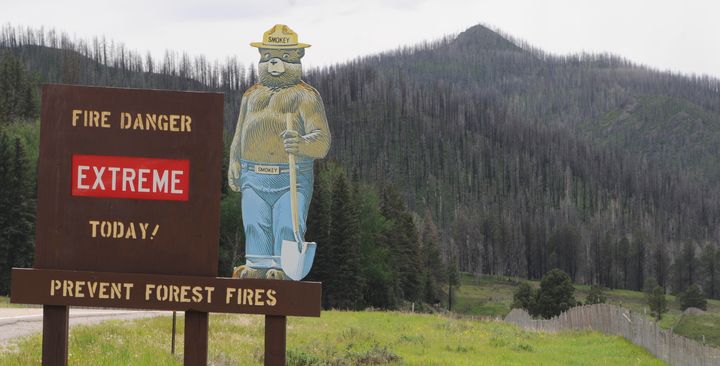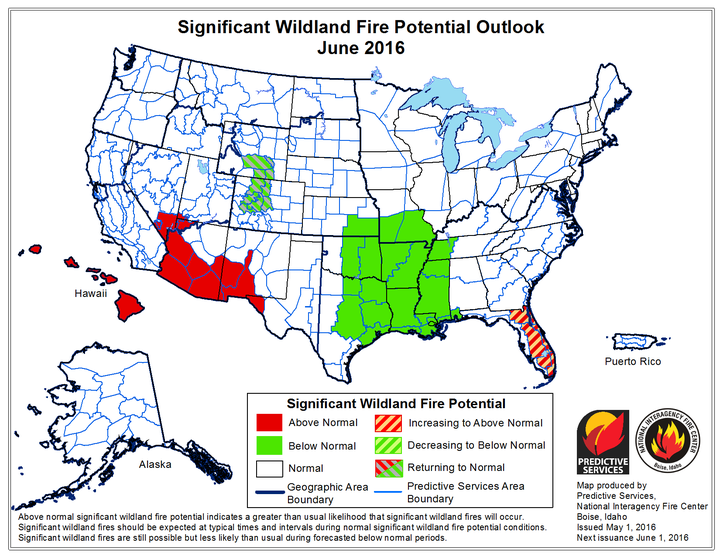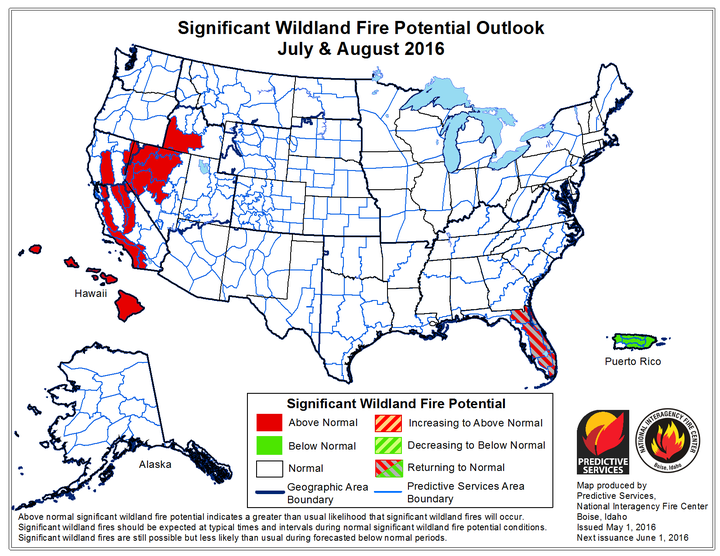
Sorry, "Game of Thrones" fans, winter is only imminent in Westeros. In the U.S., summer approaches -- with the threat of wildfires.
The National Interagency Fire Center, in a report released Sunday, predicted conditions from May through August will put much of the West, Southwest, Hawaii and Alaska in above-normal wildfire danger. South-Central states and Puerto Rico should expect below-normal fire danger, the center said.
Colorado, however, after a series of volatile fire seasons, may see below-average early danger this year, thanks to moisture-laden spring storms. The snowpack is slightly above average in most of the state's river basins.
"That doesn't mean we're not going to have a fire season," National Weather Service meteorologist Kyle Fredin cautioned, according to the Denver Post. "But it can hold off fire season a little longer. It is three or four months away" in Colorado.

Alaska, after a devastating fire season in 2015, will yet again face elevated fire danger this year, the fire center predicts. Low snowpack and unseasonably warm temperatures in the south central part of the state (the most populated region) will keep the fire danger above normal fire through May.
A wetter than average summer is expected to diminish Alaska's fire potential beginning in June, dropping it back to a normal wildfire threat.

As late spring transitions to summer, wildfire danger will spread north from southern Arizona across much of California, western Nevada, and southern Idaho.
The report notes Southern California and western Nevada face "extreme to exceptional drought conditions" that will pose a problem as seasonal rains taper in mid to late June.
Hawaii will see "significant fire potential" from May through August, the report says.
The island chain's annual dry phase in summer will be compounded this year by below-normal spring rainfall, the agency said. The drought is predicted to peak in early fall "at much drier conditions than usual."

In 2015, wildfires burned a record 10.1 million acres in the U.S., more than half in Alaska. The damage surpassed the previous record of 9.8 million acres set in 2006.

